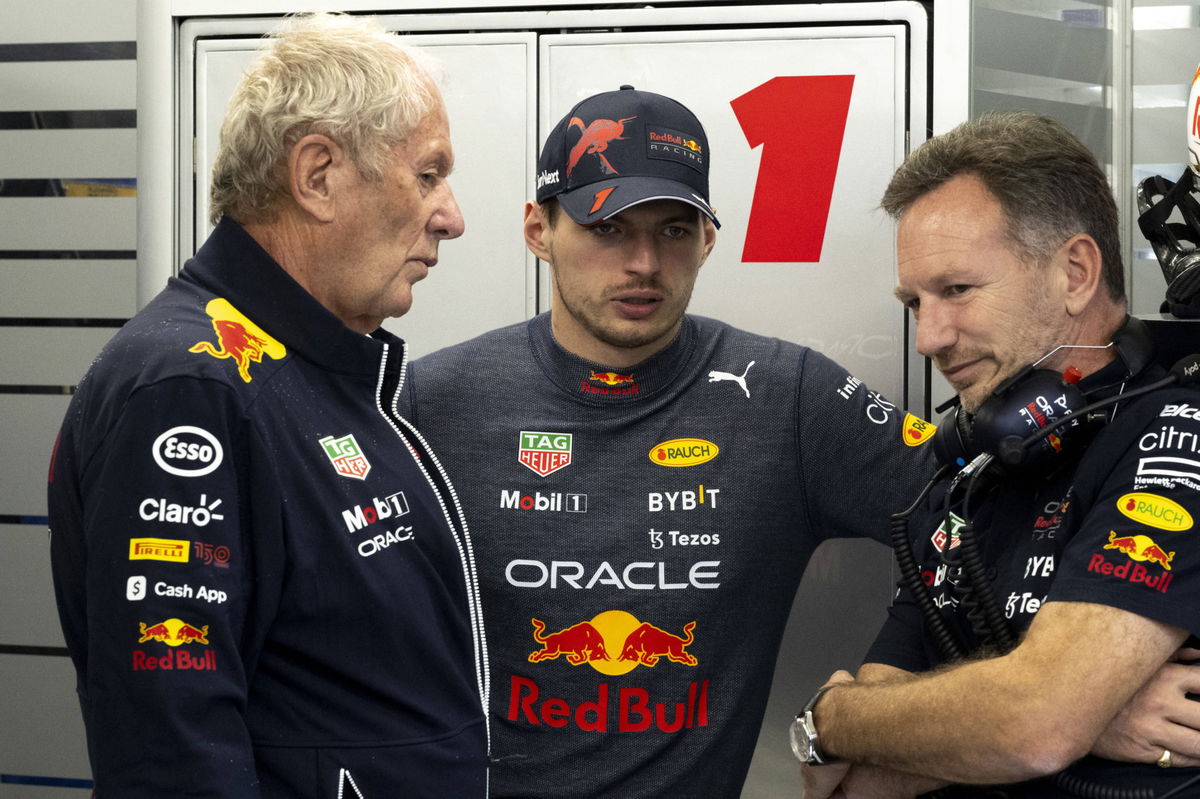
Imago
Credits: Imago

Imago
Credits: Imago
In the cool, neon-lit nights of Las Vegas, the Formula 1 circus faces a peculiar challenge, a dance of engineering precision and strategic gamble, much like the city itself. The Las Vegas GP, scheduled for 18th November, promises a spectacle under the desert sky, but it’s not just the bright lights that are drawing attention. The weather, often a silent player in the grand theater of motorsport, takes center stage here, cloaked in the uncharacteristic cold.
Watch What’s Trending Now!
Las Vegas, known for its scorching days, reveals a different face as night falls. Temperatures, a pivotal character in this narrative, are expected to drop significantly, with historical averages suggesting a range between a crisp 4°C (39°F) and a mild 15°C (59°F). This isn’t typical Vegas weather, nor typical for Formula 1, where races usually bask in warmer climes. In fact, McLaren CEO Zak Brown muses that this might be the coldest race on the F1 calendar.
ADVERTISEMENT
Tackling Las Vegas GP’s high-speed cold conundrum
The track itself, a temporary street circuit, unfurls like a ribbon through the heart of the city, boasting three long straights, one stretching an impressive two kilometers down the famed Strip, interspersed with 17 corners. This layout, a blend of high-speed stretches and technical turns, presents a conundrum. F1 cars, like high-performance athletes, rely on warm tires for grip – their connection to the tarmac. Cold weather could see these mechanical marvels struggle, much like a deer on ice, if not for the ingenuity of those behind the scenes.
Formula One has invested over half a billion dollars in the Las Vegas Grand Prix.
But the late lights-out time is also set to impact one of F1’s biggest variables, and thus the nature of the race: the performance of the tires. pic.twitter.com/miIe3tcnjB
— The Athletic (@TheAthletic) November 8, 2023
Enter the aerodynamicists and tire engineers, the unsung heroes in this high-speed ballet. Their task? To find a delicate balance. More downforce, usually achieved by adding more rear wing, translates to more load on the tires, generating much-needed heat. This is a boon in cold conditions, where warm tires mean better grip. However, Vegas’ long straights favor a low downforce setup for optimal speed, creating a tug-of-war between grip and pace. Carlos Sainz, a maestro behind the wheel, articulates this challenge, noting how the tires will cool down on the straights, only to be thrust into corners with a low downforce setting, on a new surface, in the Vegas cold.
ADVERTISEMENT
The timing of the race adds another layer to this complex puzzle. While most Formula 1 races bask in the mid-afternoon sun, the Las Vegas GP breaks the mold, with the main race starting at 10:00 pm local time and qualifying stretching into midnight. This nocturnal schedule, a nod to the city’s vibrant nightlife, amplifies the cold’s impact, making it not just a race against rivals, but against the whims of nature.
Top Stories
Who Is Liam Lawson’s Girlfriend, Charlotte Miller?

Who Is Oscar Piastri’s Father, Chris Piastri? Co-Founder of Multibillion Dollar Automotive Company

Alex Albon Recalls Inspiring Revival After Mom’s Prison Exile Crushed Life as He Knew It

Who Is Canadian F1 Billionaire Lawrence Stroll’s Daughter & Heiress Chloe Stroll?

Oscar Piastri’s Father Once Made “Hardest” Commitment That Turned Son Into McLaren Driver

Read More: ‘We’ll Party & Gamble’: Carlos Sainz & Charles Leclerc Make Dreamy Plans for Las Vegas GP
ADVERTISEMENT
In this glittering desert spectacle, teams and drivers aren’t just racing each other; they’re racing against the elements, against the clock, and against the unpredictability of a city that thrives on chance. Sergio Perez speaks with a tone of caution and intrigue as well.
Las Vegas GP’s cold challenge for Red Bull’s dominance
Perez openly warns, “I think it’s going be something that will gonna be very present there,” referring to the low temperatures. This chill, he implies, isn’t an ally to Red Bull, a team that has tasted defeat only once this year. The cold, he suggests, is an equalizer, a factor that might not favor their established dominance.
ADVERTISEMENT

Reuters
Qatar Grand Prix, Red Bull’s Sergio Perez is interviewed ahead of practice (Credits: Reuters)
The race promises a duel not just with rivals but with nature itself. The Pirelli tires, pivotal in the symphony of speed, demand a specific warmth to grip the asphalt. But the cold air plays a defiant tune, making the tires stubborn in yielding their best. Drivers will need to patiently warm them up, lap by lap before they can unleash their true potential.
In a mix of realism and foresight, Perez reflects on the unpredictability of the conditions. “Those things are very hard to simulate, also knowing which sort of wind direction we’re going to have,” he observes, highlighting the limitations of technology in replicating the real-world challenges they are about to face.
ADVERTISEMENT
WATCH THIS STORY | F1 Drivers Trying Their Hand at Different Sports
For Red Bull, this isn’t just another race; it’s a test of their ability to adapt and conquer under unfamiliar conditions.
ADVERTISEMENT
ADVERTISEMENT
ADVERTISEMENT

